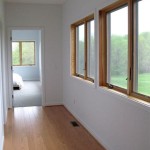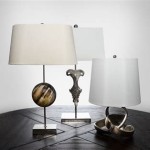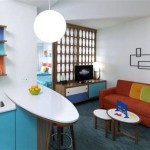Spanish Colonial Interior Design: A Journey Through History and Style
Spanish Colonial interior design, a captivating blend of European artistry and indigenous influences, reflects the rich history and cultural fusion of Spain's colonial era. From the grand haciendas of Mexico to the elegant homes of the Caribbean, this distinctive style continues to enthrall design enthusiasts with its timeless charm and intricate details. This article delves into the defining characteristics of Spanish Colonial interior design, exploring its key elements, inspirations, and enduring legacy.
The Foundations of Spanish Colonial Design
Spanish Colonial interior design emerged during the 16th century, as Spain established its vast colonial empire in the Americas. The style was deeply influenced by the architectural and decorative traditions of Spain, particularly those of the Renaissance, Baroque, and Moorish periods. This fusion of European and indigenous influences led to a unique aesthetic characterized by vibrant colors, intricate craftsmanship, and a sense of grandeur.
The arrival of Spanish conquistadors brought with them European furniture, textiles, and decorative motifs. These elements were often adapted to suit the local climate and materials available in the colonies. For example, Spanish Colonial furniture often featured intricate carvings and inlays, but it also incorporated local hardwoods and crafting techniques. This blending of styles became a hallmark of Spanish Colonial design, creating a rich tapestry of cultural influences.
Key Elements of Spanish Colonial Interior Design
Spanish Colonial interior design is characterized by several key elements that define its unique aesthetic. These elements are evident in both traditional and modern interpretations of the style.
1. Warm and Earthy Color Palette
Spanish Colonial interiors are known for their warm and inviting color palettes. Earthy tones like terracotta, ochre, and deep red are commonly used to evoke the natural landscapes of Spain and the Americas. These colors are often complemented by accents of blue, green, and yellow, inspired by the vibrant flora and fauna of the region. This palette creates a sense of warmth, comfort, and connection to the earth.
2. Intricate Architectural Details
Spanish Colonial interiors often feature intricate architectural details that add a sense of grandeur and elegance. These details include ornate plasterwork, carved wooden beams, and decorative tilework. Traditional Spanish Colonial homes often incorporate elements like arched doorways, courtyards, and patios, creating an open and airy atmosphere. These architectural features contribute to the distinctive charm and historical significance of the style.
3. Handcrafted Furniture and Textiles
Handcrafted furniture and textiles play a crucial role in Spanish Colonial interior design. Furniture is often made from local hardwoods and features elaborate carvings, inlays, and painted finishes. Textiles like hand-woven tapestries, embroidered cushions, and decorative rugs add warmth and color to the interiors. The craftsmanship and attention to detail in these items enhance the overall aesthetic and reflect the cultural heritage of the style.
4. Natural Elements and Materials
Spanish Colonial design emphasizes the use of natural elements and materials. Wood, stone, and clay are commonly used for furniture, flooring, and building construction. Natural materials like woven baskets, pottery, and rustic wood furniture are often incorporated into the interiors to create a sense of authenticity and connection to the earth.
5. Religious Influences
Spanish Colonial design often includes religious influences. Many homes feature religious artwork, sculptures, and artifacts. These elements reflect the strong Catholic faith of the Spanish colonists and the importance of religion in their lives. Religious imagery and symbolism contribute to the cultural and historical significance of Spanish Colonial interiors.
The Enduring Legacy of Spanish Colonial Design
Spanish Colonial interior design continues to thrive today, inspiring contemporary interpretations that capture its essence while incorporating modern sensibilities. Its appeal lies in its timeless elegance, cultural richness, and enduring charm. The use of warm colors, intricate details, and natural materials creates a sense of comfort, history, and connection to the past.
Whether it's a modern home with Spanish Colonial accents or a meticulously restored hacienda, this design style offers a unique and captivating aesthetic. It serves as a reminder of the cultural exchange between Spain and the Americas, and its enduring popularity reflects its timeless beauty and rich heritage.

Spanish Colonial Interior Design Interiors

Day 11 Spanish Colonial Interiors Decor To Adore

Spanish Colonial Interior Design Interiors
:strip_icc()/cdn.cliqueinc.com__cache__posts__277761__cococozy-home-tour-277761-1550846390174-image.700x0c-bc12db8142c24ed6bb15d610fc1a0bf7.jpg?strip=all)
Inside A Modern 1930s Spanish Colonial Home In L

The Spanish Colonial Redefined Cindy Hattersley Design

The Spanish Colonial Redefined Cindy Hattersley Design

Day 11 Spanish Colonial Interiors Decor To Adore

Houzz Tour A Home S Spanish Colonial Style Gets Rich Refresh

Spanish Colonial Design Inspiration Wrought Iron Light Fixtures Illuminaries Lighting

Spanish Colonial Design Style What Is








